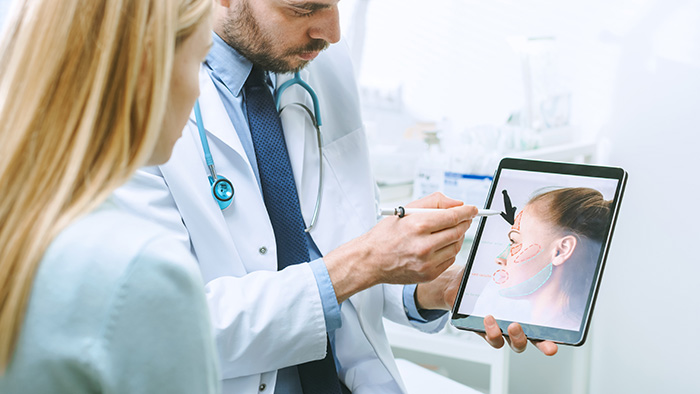Best Practices for Facelift Recovery In Houston
Your Healing Journey Starts Here
A facelift is a transformative procedure that can rejuvenate your appearance and boost your confidence. Achieving the best possible results depends not just on surgical expertise, but also on how you care for yourself during recovery. At the Texas Center for Facial Plastic Surgery, we’re committed to guiding you every step of the way.
Below are our top recommendations for a smooth, safe, and successful facelift recovery.
- Follow Your Surgeon’s Instructions
Our team of board-certified plastic surgeons will provide personalized post-operative instructions. It’s essential to follow these closely, including how to care for incisions, when to take medications, and when to attend follow-up appointments. Never hesitate to reach out with questions or concerns.
- Prioritize Rest and Elevation
Rest: Allow your body ample time to heal. Take it easy for the first week and avoid bending, heavy lifting, or strenuous activity.
Elevation: Sleep with your head elevated on two or more pillows, or in a recliner, for at least a week. This reduces swelling and encourages optimal healing.
- Manage Swelling and Bruising

Use cold compresses (as directed) during the first 48 hours.
Expect bruising and swelling to peak around days 2–3, then gradually subside.
Avoid heat or direct sun exposure to your face until cleared by your surgeon.
- Take Medications as Prescribed
Use pain medications and antibiotics as directed to stay comfortable and prevent infection.
Do not take aspirin, ibuprofen, or herbal supplements unless approved—they can increase bleeding risk.
- Keep Incisions Clean and Protected
Gently clean incision areas as instructed.
Avoid applying makeup or harsh products on incisions until your surgeon approves.
Use sunscreen once incisions are healed to protect and minimize scarring.
- Maintain a Healthy Diet and Stay Hydrated
Eat nutritious, balanced meals to support healing.
Stay hydrated, but limit salt, which can worsen swelling.
- Minimize Movement and Facial Strain
Avoid excessive talking, laughing, or chewing (stick to soft foods at first).
Do not bend over or make sudden head movements, as this can increase swelling or discomfort.
- Avoid Smoking and Alcohol
Smoking delays healing and increases complication risks.
Alcohol can interact with medications and dehydrate you—avoid until fully healed.
- Be Patient and Listen to Your Body
Most initial swelling and bruising resolve in 2–3 weeks; subtle changes may continue for several months. It is so important to take the time your body needs—don’t rush back to full activity or social events until you feel ready.
- Attend All Follow-Up Appointments
Regular check-ins ensure your healing is on track and give you a chance to ask questions.
Notify us promptly of any concerns such as severe pain, fever, unusual redness, or bleeding.
Your Partners in Facelift Recovery
The team at the Texas Center for Facial Plastic Surgery is here to support you from your first consultation to your final result. If you have any questions, please contact us right away.
Want more information? Visit our Facelift page to learn more.
Ready for your next step? Book your appointment today!


